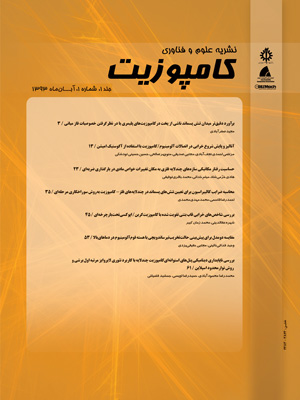نوع مقاله : مقاله پژوهشی
نویسندگان
1 استادیار، دانشکده مهندسی مکانیک، دانشگاه علم و صنعت ایران، تهران، ایران
2 کارشناسی ارشد، دانشکده مهندسی مکانیک، دانشگاه علم و صنعت ایران، تهران، ایران
چکیده
در این تحقیق، عوامل تاثیرگذار بر استحکام اتصال ترکیبی چسبی-پرچی مورد بررسی قرار گرفت. برای این منظور ابتدا مدل اجزای محدود با استفاده از نتایج آزمایشگاهی اعتبارسنجی شد، سپس عوامل تاثیرگذار هندسی و مادی با استفاده از تحلیلهای اجزای محدود صریح با قابلیت مدلسازی آسیب در پرچها و لایه چسب بهصورت پیشرونده بررسی شد. نتایج نشان دادند، در یک اتصال ترکیبی بهترین حالت برای ایجاد سوراخ بهمنظور قرار دادن پرچ، حالتی است که کمترین کاهش استحکام را در اتصال چسبی ایجاد نماید یا به عبارت دیگر سوراخها از لبههای اتصال فاصله بیشتری داشته باشند که این بر خلاف اتصال پرچی تنها میباشد که نزدیکتر بودن پرچها به لبههای اتصال موجب افزایش استحکام میشود. بهطور کلی افزودن پرچ به یک اتصال چسبی بهمنظور ایجاد اتصال ترکیبی، میتواند تحت شرایط مختلف باعث افزایش یا کاهش استحکام اتصال شود که در این تحقیق مورد بررسی قرار گرفته است. این مطلب باید مورد توجه طراحان قرار گیرد. قابل ذکر است اگر استحکام لایه چسب در مقایسه با پرچها پایینتر باشد پرچها بهتر است در نزدیکی لبههای اتصال قرار گیرند.
کلیدواژهها
عنوان مقاله [English]
Investigation of the effect of material and geometrical parameters affecting the strength of hybrid adhesive- riveted joints
نویسندگان [English]
- Hadi Khoramishad 1
- Sajjad Nasiri 2
1 Department of Mechanical Engineering, Iran University of Science and Technology, Tehran, Iran
2 Department of Mechanical Engineering, Iran University of Science and Technology, Tehran, Iran
چکیده [English]
In this paper, the influencing factors on hybrid adhesive-riveted joints were investigated. For this purpose, first a finite element model was validated based on experimental results, then the effects of influencing material and geometrical factors on the strength of the hybrid joints were studied using the explicit finite element analyses. The numerical model was able to simulate damage in the adhesive layer and in the rivets. The results showed that in a hybrid adhesive-riveted joint, it is better to position the rivets where a minimum reduction in the adhesive joint due to the rivet holes obtained i.e. as far as possible from the joint ends. This is in contrary to the riveted joints in which placing the rivets closer to the joint ends resulted higher joint strength. In general, incorporating rivets in an adhesive joint for manufacturing a hybrid joint can result higher or lower joint strength in comparison with the adhesive joint in different conditions that were studied in this research. It should be noted that in case that a low-strength adhesive is utilized in a hybrid adhesive-riveted joint then placing the rivets closer to the joint ends can results higher strength for the joint similar to the riveted joints.
کلیدواژهها [English]
- Adhesive joint
- Riveted joint
- Hybrid adhesive-riveted joint
- Strength
- Cohesive zone model
